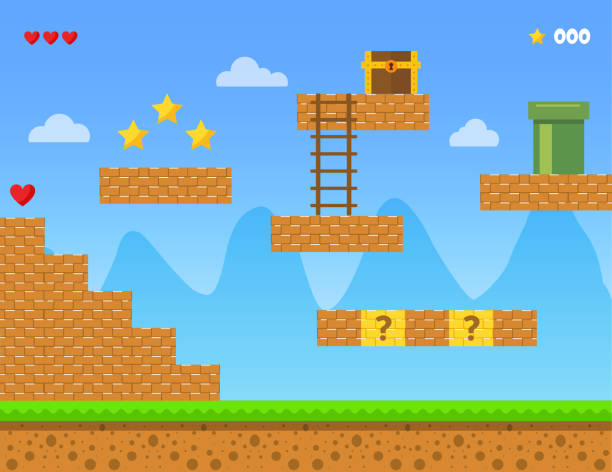2D art is the simplest form of game art, but it’s also one of the most effective. 2D games are easy to create and don’t require a lot of money or manpower to make. If you’re not sure where to start with making your own game, this is a great place!
What is a 2D Game Art?
2D Game Art is a type of game art. It’s not 3D. It’s also not 2.5D, which is a term you might have heard before and used interchangeably with 2D Game Art because it sounds cool (and it is).
In short: if your game has no depth or perspective–like Pac-Man or Tetris–then it’s probably 2D video games.
What Was The First 2D Game?
The first 2D game was Pong, which was released in 1972. The gameplay of Pong is simple: you control a paddle on the left side and try to keep a ball from going past it by hitting it back at your opponent. If you don’t hit the ball enough times before it goes out of bounds, then you lose!
Space Invaders was released in 1978 and became one of the most iconic video games ever made. In this game, aliens are coming down from space and you have to shoot them before they reach earth (and kill us all). If one gets close enough to land on Earth’s surface, then he’ll start shooting back at you with his laser beam weapon–so watch out!
Pac-Man also debuted in 1980 as another arcade classic that has been ported over into many other forms since then including mobile apps or even Tetris clones! It’s basically like eating dots while avoiding ghosts who chase after our hero Mr Pacman trying their best not eat him up along with those delicious dots too 🙂
2D Game Art Styles
2D game art is a visual style that is used in video games. It is a type of art that uses two-dimensional images and/or objects. 2D game art can be created with any number of methods, but it often involves hand-drawn or computer generated images that are then animated through various means (for example, Flash animation). The most common examples of this type of game would be Super Mario Bros., Space Invaders or Pac Man; however there are many other examples as well!
The term “sprite” has become synonymous with 2D game art due to its use by early arcade games such as Pong where sprites were used as characters on screen instead of 3D models like we see today (in fact they weren’t even called “sprites” back then). However recently we’ve seen some amazing advances made towards creating realistic looking 3D characters without sacrificing anything from their performance capabilities – so don’t let me discourage anyone who wants more realism than what’s possible using traditional methods!
How Do You Make Your Own Game?
A game engine is a piece of software that allows you to create games.
Gamemaker (formerly known as Gamemaker Studio) is the most popular 2D game engine, and it’s free! You can download it here. It comes with a lot of pre-made assets and templates, so if you want to start making games immediately without having any artistic skill then this might be for you! Once installed, open up the program and follow my tutorial on how to use gamemaker here: http://www.howtogamemaker.com/how-to-make-games/beginners/. If you have some experience in art or animation then I recommend using another program like Spine or Blender instead (see below).
What Does It Take To Make Good 2D Game Art?
Getting good at 2D game art is a long process. You need to know the tools, be a good artist, be a good programmer, be a good designer and work well with others. It’s also important that you communicate effectively and collaborate with your team members.
How To Make A 2D Game With Gamemaker
It’s possible to make your own games, but if you want to make a 2D game with Gamemaker, it’s best to have some coding knowledge. You can use gamemaker to create your own 2D art and then put it into your game.
How to Hire 2D Artists?
Hiring 2D artists is a little bit more complicated than hiring 3D artists, but it’s not too difficult. When hiring 2D artists, you need to take into consideration the same things that you would with 3D artists:
- Passion for their work. You want someone who will be excited about creating art for your game and not just doing it as a job.
- Portfolio and references. Make sure they have an online portfolio showing off their previous work so that you can see if they’re a good fit for your project before reaching out to them directly (if applicable). If possible, ask for references from previous employers so that you can speak with them about what kind of person this artist was during his or her employment period(s). If there’s no way around speaking directly with someone else about how well this person worked out while employed at another company/studio/etc., then make sure both parties agree upon confidentiality agreements beforehand–you wouldn’t want any sensitive information leaking into public knowledge!
Conclusion
In the end, it’s important to remember that 2D art is just another tool in your arsenal. With the right knowledge and skill, you can make some really amazing things with it!
